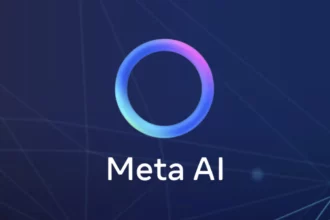How Large Language Models Solve Mathematical Problems
Ah, the age-old question: Can LLMs do math? Picture this – a virtual brainiac wrapped in algorithms and code bravely venturing into the world of numbers, ready to conquer mathematical challenges like a fearless warrior.
Now, let’s delve into how Large Language Models (LLMs) tackle mathematical problems. These tech marvels are like the jacks-of-all-trades in the AI realm, especially when it comes to crunching numbers and solving equations automatically. But hey, the world of math isn’t just about 2+2; it’s a vast universe with Arithmetic, Math Word Problems, Geometry, Automated Theorem Proving, and more.
Let’s focus on Math Word Problems for now. These are like puzzles disguised in words that require clever unraveling. From deciphering scenarios to applying the right operations, it’s all about mixing critical thinking with math skills. Think of it as solving mysteries with numbers! 🕵️
In Math Word Problems land, there are variations galore – from simple Q&A scenarios to equations being thrown into the mix 🤯. And guess what? There are datasets aplenty tracking these tricky problems across different levels and languages.
Saviez-vous that these datasets not only challenge model performance but also teach us valuable insights about problem-solving and reasoning paths. They’re like treasure troves of math mysteries waiting to be unraveled by LLMs!
So next time you wonder if LLMs can do math – remember they’re not just tapping away on keyboards; they’re cracking codes in the world of numbers and text, one problem at a time. Curious for more? Keep exploring to unveil even more mathematical wonders ahead! 🚀😊
Table of Contents
ToggleChallenges and Limitations of Using LLMs for Math
When it comes to using Large Language Models (LLMs) for math, the struggle is real, my friend. These tech gurus, despite their linguistic prowess, often stumble when delving into the realm of numbers. Picture this: LLMs like ChatGPT and Khanmigo grappling with Geometry and other math conundrums as if trying to solve a Rubik’s Cube blindfolded! It’s like expecting a cat to master calculus – tricky business indeed.
So what’s the deal with LLMs and math? Well, here’s the scoop: these AI marvels are more wired for words than numbers. Their training data mostly focuses on language, leaving them a bit lost in the sea of complex mathematical concepts. It’s like asking an artist to build a rocket – not impossible but definitely not their forte.
The challenges don’t stop there – mathematical language is a whole different ball game. Unlike casual chitchat, math communication involves symbols, syntax juggles, and hidden rules that would even confuse Einstein! The precision required in math reasoning makes it a tough nut to crack for our dear LLM pals.
And here’s a fun fact: while LLMs may ace straightforward number-crunching questions (think 2+2), they still struggle with proofs and deep conceptual math queries without holding our hands through every step (not quite ready for that PhD in Math just yet).
Research studies have shown that LLMs can lag way behind your average grad student in mathematics – talk about being schooled by humans! So next time you ponder if LLMs are the math maestros of tomorrow, remember – they might be linguistic whizzes but when it comes to crunching hardcore numbers, they’re still in primary school.
Evaluating the Best LLMs for Solving Math Problems
When it comes to evaluating the best Large Language Models (LLMs) for solving math problems, the road might be bumpier than a math teacher’s worst nightmare. Even the creme de la creme of LLMs struggle with a less-than-stellar accuracy rate when faced with mathematical challenges. However, there’s a glimmer of hope shining through the digits and equations – enter MathGLM, a model trained specifically on mathematical calculations. Researchers from Tsinghua University showcased how this math-focused model can tackle problems with decent accuracy, proving that specialized training might just be the key to unlock LLMs’ potential in the math realm.
Now, let’s talk about Claude 3 Opus – the rockstar of LLMs in 2023 when it came to solving math problems. This superstar boasted an impressive global rating of 60.1%, showcasing its prowess in handling mathematical tasks with more finesse than others in its league. It goes to show that not all heroes wear capes; some come clad in algorithms and data.
Why are LLMs still struggling with longer Math Word Problems (MWPs) despite their cognitive might? The culprit seems to be long contexts throwing them off their game. It’s like giving someone a Rubik’s Cube without showing them all sides – tricky and confusing! Despite their setbacks in MWP territory, proprietary LLMs exhibit bursts of strong math reasoning capabilities, proving that even geniuses stumble but can also rise above challenges.
While navigating through the labyrinthine world of mathematical language may seem daunting for LLMs – riddled with symbols and syntax acrobatics akin to deciphering an ancient code – specialized models like MathGLM provide a ray of hope amidst these numerical adventures.
So, while LLMs might not have graduated summa cum laude from Math University just yet, there’s still room for growth and improvement in their mathematical journey ahead. Who knows? Maybe one day they’ll surprise us all by calculating those mind-bending equations faster than you can say “Pi.” Time will tell!
Real-World Applications of LLMs in Mathematics
When it comes to the real-world applications of Large Language Models (LLMs) in mathematics, the journey takes an intriguing turn. Imagine LLMs donning their mathematical capes, ready to tackle real-life challenges with a mix of linguistic flair and number-crunching prowess. From managing finances to cooking up the perfect recipe, from planning trips efficiently to mastering time management like a boss – math plays a vital role in our everyday lives. It’s like having a trusty sidekick whispering calculations in your ear as you navigate through the maze of practical tasks!
But hold on! Despite their linguistic wizardry, LLMs often stumble when handling mathematical tasks. Picture this: LLMs like ChatGPT and Google Bard fumbling through arithmetic equations like trying to thread a needle blindfolded – not exactly their forte! These tech marvels are more inclined towards deciphering texts than solving complex math problems, making them more like wordsmiths rather than mathematicians.
Now, let’s delve into the nitty-gritty of why math proves to be a thorn in the side of LLMs. Mathematical language is intricate and precise, akin to decoding an ancient cipher without the rulebook. While LLMs may ace basic number operations (think 2+2), they stumble when faced with proofs and intricate algebraic equations that require depth and understanding beyond simple calculations.
Despite their setbacks in mathematics, there’s hope on the horizon with specialized training models like MathGLM aiming to bridge the gap between language expertise and numerical finesse. Just as superheroes undergo rigorous training to master their powers, these specialized models might hold the key for LLMs to unlock their mathematical potential and pave the way for groundbreaking discoveries.
So while LLMs may not be snagging top honors in Math University just yet, there’s room for growth and improvement as they tread along on their mathematical journey. Perhaps one day they’ll surprise us all by effortlessly solving those mind-bending equations faster than you can say “Euler’s Identity”! Stay tuned for more exciting adventures ahead! 🤖🔢
- Large Language Models (LLMs) can tackle mathematical problems, including Math Word Problems, by combining critical thinking with math skills.
- Math Word Problems present a variety of challenges for LLMs, from simple Q&A scenarios to complex equations, testing their problem-solving abilities.
- Datasets tracking math word problems challenge LLM performance and provide valuable insights into problem-solving and reasoning paths.
- LLMs, despite their linguistic capabilities, face challenges when dealing with mathematical concepts like Geometry due to their primary focus on language in training data.




